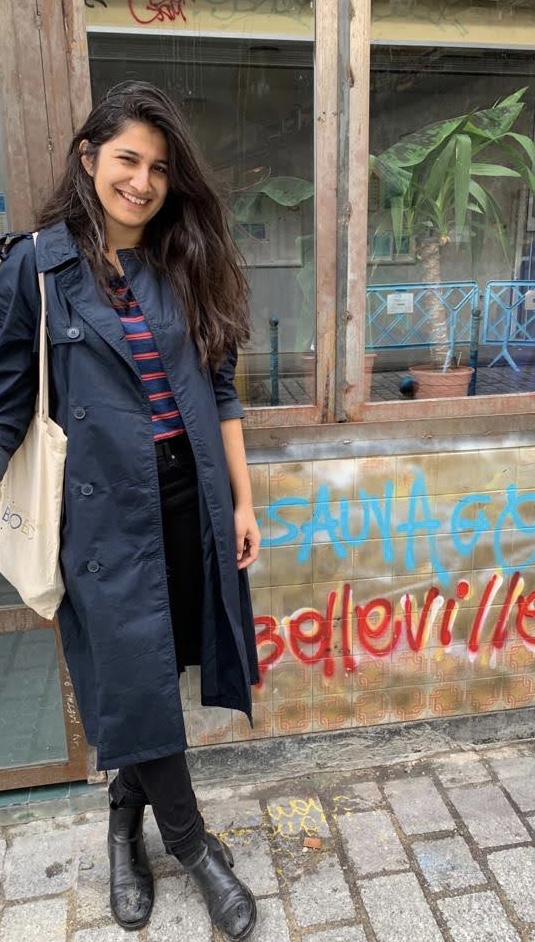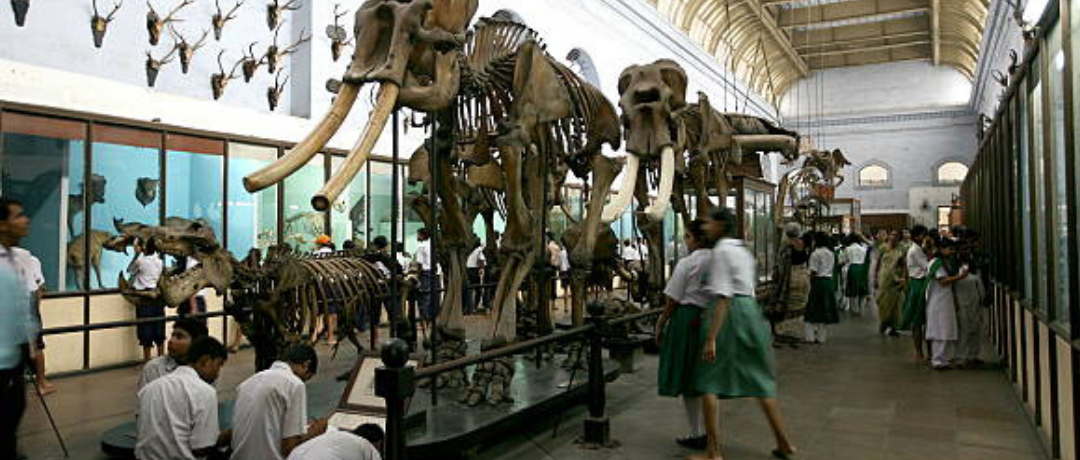Group of students visiting the Mammal Gallery at the Indian Museum, Kolkata (Image courtesy: The Getty Images)
As a cultural repository, museums are an integral part of any country and are an indispensable part of India’s growth and identity. Yet, only a handful pay active attention to the state of museums and as private citizens, we are predisposed to take these places for granted. As a student of history, going to the National Museum in Central Delhi was a periodic activity whenever I visited the city. Ever since I can remember, the curatorial layout of the artefacts, the interiors, and till very recently the paint of the gallery had not changed. The lighting and display had not been updated and the descriptive texts have remained exactly the same. It is no surprise then that these museums are sparsely visited even on Sundays.
As a student and a tourist in Paris and Berlin, I got the chance to experience a number of museums. In the early hours of the winter Sunday morning, I saw an array of families lined up outside the Hamburger Bahnhof in Berlin, one of their premier contemporary art museums. Compared to this, why is it that only a handful in India visit museums as a leisure activity?

A reflection of the state of display and outdated curatorial narrative within our public museums. This represents a woman from Odisha’s Gadaba tribe at the Government Museum in Chennai. India’s colonial mindset can be seen in its interaction with tribal culture, symbolically preserving it in glass cases for the clinical observation of largely non-tribal visitors. (image credits: The Caravan)
There has to be something more to it than just a flailing curatorial vision – and here I argue that the biggest issue is funding. If the primary conversation comes down to funding, then it is about the amount of funds required for India’s many museums, and the underutilisation of these funds by the museums themselves – or the know-how to do so. The Union Budget for the Ministry of Culture was cut by 15%, to ₹2,688 crore -₹461 crore less than last year (Sahapedia, Budget Guide, 2021-22). When the revised estimation came in, the total expenditure was 29.8% lesser than the previous financial year, leading to an overall cut in the allocation. However with the 2022-23 budget, the Ministry of Culture received an 11.9% raise from the previous year, out of which 35% has been solely allocated to the ASI (India Today, 2022). In addition, the government has been running the Museum Grant Scheme since 2013 that allocates a one-time fund to all museums managed by the government and private entities or through public-private partnerships.
One major limitation for public museums in India is the lack of access to private funding or the authority to go beyond government allocated budgets. Each type of funding offers their unique set of challenges but with public museums, this is twofold – to first compete with other national and state museums (and a plethora of other cultural institutions) for a piece of the budget and the underutilisation of whatever limited funding received due to lack of access and knowledge.
Understanding the 3 Types of Funding
Funding for museums comes from three primary sources – Public, Private and through Public-Private Partnership. The first two are self-explanatory and are by far the most prevalent and direct avenues of museum funding. All national and state museums across the country that receive direct funding and are managed by the government come under the sphere of public museums, and on the opposite spectrum are museums like Kiran Nadar Museum of Art (KNMA) or the Museum of Art and Photography (MAP) that are privately funded and/or through CSR ventures. The last type of funding is Public-Private Partnerships.
What is the PPP model?
The Public-Private Partnerships model allows for the government and the private sector to come together to invest and manage projects and institutions. In the area of culture, it can be executed through public-private ventures, philanthropy or social and environmental corporate responsibility (CSR).
With as diverse a cultural society as ours, depending solely on either one sector, i.e public or private, is not sustainable. With PPP, the burden of funding comes on both and hence facilitates a more speedy delivery of projects. India’s unique problems with public funding – only about 1% of Indians pay income tax (Financial Express, 2020) means that prioritising art over a plethora of other issues is not feasible, either politically or socially. It would also not be recommended that we compare India’s economic capacity to more developed economies where not only is the private investment in arts more dominant but also, the government has enough budget allocation towards the art and cultural sector. In countries like the United States, this private funding is heavily incentivised by attractive tax cuts which are not available in India. Furthermore, depending solely on the State could also potentially affect the integrity of research and where and how the funds are being utilised. In some cases, the political and ideological preconditioning of those in power could dictate the way research is being conducted and in some cases the results of said research.

Example of Public-Private Partnership in India with the coming together of KNMA, CII, NGMA and Ministry of Culture for the Venice Biennale in 2019 (image courtesy: The Logical Indian, 2019)
One excellent example of a private-public partnership is the Dr. Bhau Daji Lad Museum which is an institution of the Municipal Corporation of Greater Mumbai, but the management of which is delivered through a public-private partnership between the Municipal Corporation Greater Mumbai (MCGM), the Jamnalal Bajaj Foundation and the Indian National Trust for Art and Cultural Heritage (INTACH). Another is the Kolkata Museum of Modern Art, which is a tripartite public-private partnership between the Indian government, the government of West Bengal and the private sector. These PPP models can drive the engine of collaboration forward, creating some of India’s best museums. Partnerships also allow for growth and utilising knowledge from both spectrums, ensuring a division of labour and resources wherein gaps can be better filled through cooperation. The power of such a system can be seen in the partnership between KNMA, Confederate of Indian Industries (CII) and the Ministry of Culture that enabled India’s return to the Venice Biennale after an eight-year hiatus.

Interiors of Dr. Bhau Daji Lad Museum after its restoration in 2008, Mumbai. (image credit: Apollo Magazine, 2017)
So, why do we need to break our heads over museum funding? Because museums are some of the most important cultural institutions of a country. They facilitate cross-cultural communication and research, are responsible for preserving our diverse narratives and stories, and for making history relevant for times to come. Within a growing focus on culture, well-funded museums are more able to include a wide variety of identities, and be representative of India’s diverse landscape and economically, private-public partnerships are the most efficient way to ensure this.
About the Author

With over six-year of engagement within the Indian art sector, Isha Chaturvedi has a specialisation in collection management and client services. Currently working for Ashvita’s Fine Art and Collectibles, her work revolves around the modern and contemporary Indian art market. Her master’s thesis revolved around the relevance and propagation of CSR within the Indian cultural sector. Currently, at Ashvita’s, her role expands to curatorial ideation, content creation, writing and project management and overall auction operations. Isha has also published her writings in Indian and international publications and art blogs. She is interested in commercial art education and dissemination and evolving the market by equipping younger and upcoming artists through professional structural support.








Recent Comments